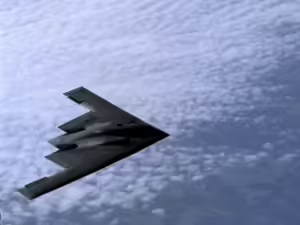US President Joe Biden has announced that three US servicemen were killed and at least another 34 injured in a drone attack on a US base at the Jordan-Syria border yesterday (Sunday) morning.
The drone struck in the early morning as troops were asleep in a barracks, causing high casualties. The US is investigating why its air defences failed.
Who did this?
Stay on top of your world from inside your inbox.
Subscribe for free today and receive way much more insights.
Trusted by 134,000+ subscribers
No spam. No noise. Unsubscribe any time.
A broad, Iran-backed collective has claimed responsibility for various attacks over the weekend, but the specific culprit here is likely Kata’ib Hezbollah, an Iran-backed Shiite group that fought coalition forces in Iraq. The US hit one of its sites in Iraq just last week, and killed its leader with a drone strike in 2020.
Various Iranian-backed groups in the region have now launched 150+ drone and other strikes on US forces since the Hamas attacks of 7 October, wounding at least 70. But this is the first that’s killed US military personnel.
Why’d they do this?
The US-Iran rift goes back decades, but these days Iran and its proxies want to:
- Punish the US for defending Israel’s response to the Hamas attacks
- Isolate Israel, which Iranian leaders have long pledged to destroy
- Stop the US and its partners from curbing Iran’s regional ambitions
- Seek security by destabilising and then controlling their periphery, and
- The Iranian regime’s “death to America” narrative also helps it retain power at home while cultivating influence abroad
What’s a US base doing on the Jordan-Syria border?
The US base (‘Tower 22’) started out as a place for the US to train Syrian rebels fighting against the Assad regime, and later to train Kurdish rebels fighting against ISIS. These days, it’s part of a string of US bases in the immediate area aiming to disrupt Iranian supply lines to its regional proxies.
How has the world responded?
Iranian state media outlets are reporting Iran’s denial of any involvement, while Hamas claims the attack was “a message to the US administration that unless the killing of innocents in Gaza stops, it must confront the entire nation”.
Interestingly, Jordan (a US ally) initially denied the attack occurred on its own soil – Jordan doesn’t generally acknowledge the base’s existence in public, in an effort to avoid inflaming anti-US sentiment.
As for President Biden, he’s said “we will hold all those responsible to account at a time and in a manner of our choosing.”
INTRIGUE’S TAKE
Technically this is an escalation in outcome rather than intent – i.e., it’s the exact same outcome Iran’s proxies have pursued via 150+ attacks on US forces since October 7th. But one of those attacks has now cost US servicemen lives, and so the US is now preparing a military response.
The challenge will be in crafting something that threads the various US interests at stake here. It wants to:
- Retaliate, but not escalate
- Deter an adversary without destabilising a region
- Use force that’s proportionate but still effective
- Show control befitting a superpower, but without looking weak
- Impose costs on an adversary that’s seeking to hurt the US from behind a veil of proxies and plausible deniability, and
- Do all this knowing that players like Russia, North Korea, and China will watch the US response very, very carefully.
Is all this possible? Yes. Is it easy? No.
Also worth noting:
- The US is working on new technologies to boost its drone defences.
- The US reportedly warned Iran in advance about the deadly ISIS bombings that took 84 Iranian lives earlier this month.
- Separately on Sunday, Iran says it conducted a simultaneous launch of three satellites for the first time, after five earlier failed attempts.








